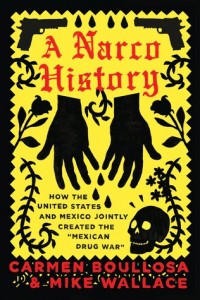
2015 A Narco History: How the United States and Mexico Jointly Created the “Mexican Drug War”
The “War Against Drugs”: who started it, and why? What are its consequences in real terms, not mere statistics, for the people most affected by it? One hundred thousand deaths later-with the vast majority of those killed innocent citizens, such as the 43 teachers college students murdered in Guerrero-the solution to peace requires a radical rethinking of how America, and its neighbors, approach the illegal drug trade.
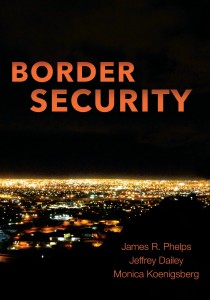
2014 Border Security
In this book, authors Phelps, Dailey and Koenigsberg describe and discuss: various definitions of ”borders,” including geographical, political, and economic; what ”border security” actually is, in relation to different types of borders and how the concept developed historically; the classical concepts of border security, including the Walled City, Hadrian's Wall, the Maginot and Seigfried Lines, and the Great Walls of China; Border Patrol Operations, from 1904 to present day; present-day physical border security, including the various Border Fences, Operation Gatekeeper, and the effects of illegal immigration; maritime border security; the relationship between border security and transnational crime; transportation security as impacted by borders; and ”solutions” to security along both the southern and northern borders of the United States.
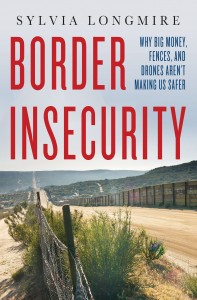
2014 Border Insecurity: Why Big Money, Fences, and Drones Aren't Making Us Safer
What does a secure border actually look like? More importantly, is a secure border a realistic goal for the United States? Border Insecurity examines all the aspects of the challenge–and thriving industry–of trying to keep terrorists, drug smugglers, and illegal immigrants from entering the United States across our land borders.
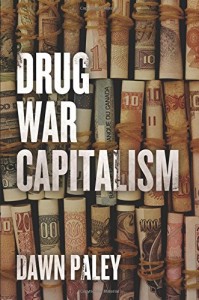
2014 Drug War Capitalism
Combining on-the-ground reporting with extensive research, Dawn Paley moves beyond the usual horror stories, beyond journalistic rubbernecking and hand-wringing, to follow the thread of the Drug War story throughout the entire region of Latin America and all the way back to US boardrooms and political offices. This unprecedented book chronicles how terror is used against the population at large in cities and rural areas, generating panic and facilitating policy changes that benefit the international private sector, particularly extractive industries like petroleum and mining. This is what is really going on. This is drug war capitalism.
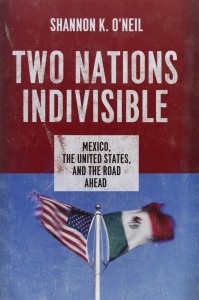
2013 Two Nations Indivisible: Mexico, the United States, and the Road Ahead
Without a doubt, the drug war is real. In the last six years, more than 60,000 people have been murdered in narco-related crimes. But there is far more to Mexico's story than this gruesome narrative would suggest. Hidden behind the headlines is a more hopeful Mexico, one undergoing rapid and widespread social, political, and economic transformations. It is one of a globally competitive economy, a rising middle class, and increasingly influential pro-democracy voters. It is a thriving Mexico whose people, communities, companies, and commerce are intricately tied to the United States.

2013 Mexico and its Diaspora in the United States: Policies of Emigration since 1848
In the past two decades, changes in the Mexican government's policies toward the 30 million Mexican migrants living in the United States highlight the importance of the Mexican diaspora in both countries given its size, its economic power, and its growing political participation across borders.
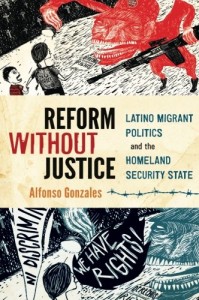
2013 Reform Without Justice: Latino Migrant Politics and the Homeland Security State
Gonzales argues that the contemporary Latino migrant movement and its allies face a dynamic form of political power that he terms “anti-migrant hegemony”. This type of political power is exerted in multiple sites of power from Congress, to think tanks, talk shows and local government institutions, through which a rhetorically race neutral and common sense public policy discourse is deployed to criminalize migrants. Most insidiously anti-migrant hegemony allows for large sectors of “pro-immigrant” groups to concede to coercive immigration enforcement measures such as a militarized border wall and the expansion of immigration policing in local communities in exchange for so-called Comprehensive Immigration Reform. Given this reality, Gonzales sustains that most efforts to advance immigration reform will fail to provide justice for migrants.

2013 Mexico and the United States: The Politics of Partnership
Exploring both policy and process, and ranging from issues of trade and development to concerns about migration, the environment, and crime, the authors of Mexico and the United States provide a comprehensive analysis of one of the world s most complex bilateral relationships.

2013 Cartel: The Coming Invasion of Mexico's Drug Wars
The drug war has claimed thousands of lives in Mexico and now the violence has crossed the border into the United States. Nearly 40,000 people have already lost their lives south of the border, and now the cartels have moved their operations north and into our cities. Having followed Mexico's cartels for years, security expert Sylvia Longmire takes us deep into the heart of their world to witness a dangerous underground where people will do whatever it takes to deliver drugs to willing American consumers, including using armies of submarines that transport narcotics along the Central American coast, a network of secret tunnels used to smuggle tons of illegal drugs north, a no-fail system of transporting high-powered assault weapons south, marijuana farms inside our national parks, and meth houses in the Midwest.
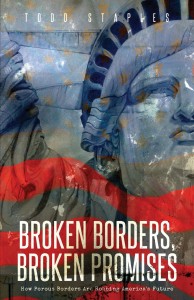
2013 Broken Borders, Broken Promises
Highlighting the good, the bad, and the ugly of our nation's attempts to secure our borders and to manage the millions of people here illegally, this book helps readers understand the challenges facing our country and urges Americans of all backgrounds to demonstrate the will to win. While federal leaders repeatedly deny the threat and daily violence along the border, author Todd Staples is documenting the daily dangers faced by Texas farmers and ranchers.
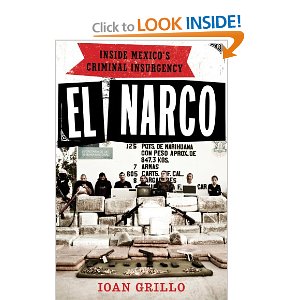
2012 El Narco: Inside Mexico's Criminal Insurgency
El Narco is not a gang; it is a movement and an industry drawing in hundreds of thousands, from bullet-riddled barrios to marijuana-covered mountains. The conflict spawned by El Narco has given rise to paramilitary death squads battling from Guatemala to the Texas border (and sometimes beyond).

2010 Mexico and the United States: Ambivalent Vistas
Drug wars, NAFTA, presidential politics, and heightened attention to Mexican immigration are just some of the recent issues that are freshly interpreted in this updated survey of Mexican-U.S. relations. Tracing the differences in ecology, climate and colonial economies, the author probes the sources of overdevelopment in the United States and of underdevelopment in Mexico.
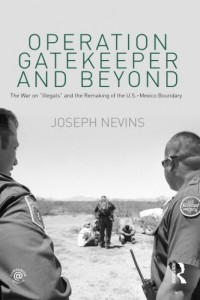
This is a major revision and update of Nevins’ earlier classic and is an ideal text for use with undergraduate students in a wide variety of courses on immigration, transnational issues, and the politics of race, inclusion and exclusion. Not only has the author brought his subject completely up to date, but as a “case” of increasing economic integration and liberalization along with growing immigration control, the US / Mexico Border and its history is put in a wider global context of similar development s elsewhere.
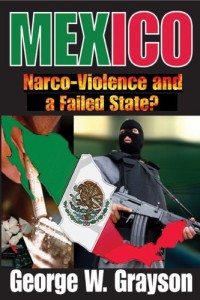
2009 Mexico: Narco-Violence and a Failed State?
Grayson focuses on drug wars, prohibition, corruption, and other antecedents that occurred during the PRI's hegemony. He illuminates the diaspora of drug cartels and their fragmentation, analyzes the emergence of new gangs, sets forth President Felipe Calder�n's strategy against vicious criminal organizations, and assesses its relative success. Grayson reviews the effect of narcotics-focused issues in U.S.-Mexican relations. He considers the possibility that Mexico may become a failed state, as feared by opinion-leaders, even as it pursues an aggressive but thus far unsuccessful crusade against the importation, processing, and sale of illegal substances.
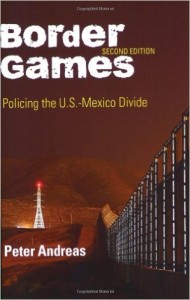
2009 Border Games: Policing the U.S.-Mexico Divide
The U.S.-Mexico border is the busiest in the world, the longest and most dramatic meeting point of a rich and poor country, and the site of intense confrontation between law enforcement and law evasion. Border control has changed in recent years from a low-maintenance and politically marginal activity to an intensive campaign focusing on drugs and migrant labor. Yet the unprecedented buildup of border policing has taken place in an era otherwise defined by the opening of the border, most notably through NAFTA. This contrast creates a borderless economy with a barricaded border.
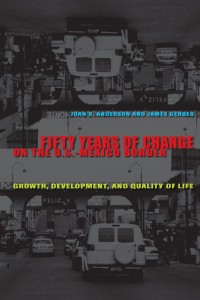
2007 Fifty Years of Change on the U.S.-Mexico Border: Growth, Development, and Quality of Life
The U.S. and Mexican border regions have experienced rapid demographic and economic growth over the last fifty years. In this analysis, Joan Anderson and James Gerber offer a new perspective on the changes and tensions pulling at the border from both sides through a discussion of cross-border economic issues and thorough analytical research that examines not only the dramatic demographic and economic growth of the region, but also shifts in living standards, the changing political climate, and environmental pressures, as well as how these affect the lives of people in the border region.
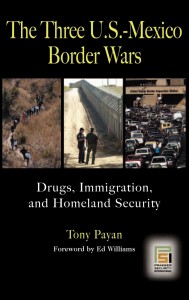
2006 The Three U.S.-Mexico Border Wars: Drugs, Immigration, and Homeland Security
The comprehensive security strategy now in place permeates the three border wars examined in this insightful work—the war on drugs, the war over the enforcement of immigration laws, and the war on terror. As Payan demonstrates, the effects of these three wars have been significant. They include a loss of local autonomy and a disconnect between the priorities of Washington, D.C., and the local populations. Perhaps more important, they have created a rigid international line that represents a barrier to economic, social, and cultural integration—and a source of fear and suspicion between neighbors.
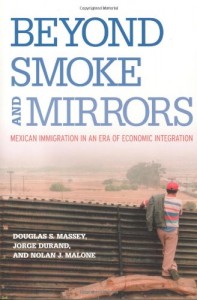
2003 Beyond Smoke and Mirrors: Mexican Immigration in an Era of Economic Integration
Migration between Mexico and the United States is part of a historical process of increasing North American integration. This process acquired new momentum with the passage of the North American Free Trade Agreement in 1994, which lowered barriers to the movement of goods, capital, services, and information. But rather than include labor in this new regime, the United States continues to resist the integration of the labor markets of the two countries. Instead of easing restrictions on Mexican labor, the United States has militarized its border and adopted restrictive new policies of immigrant disenfrachisement. Beyond Smoke and Mirrors examines the devastating impact of these immigration policies on the social and economic fabric of the Mexico and the United States, and calls for a sweeping reform of the current system.



